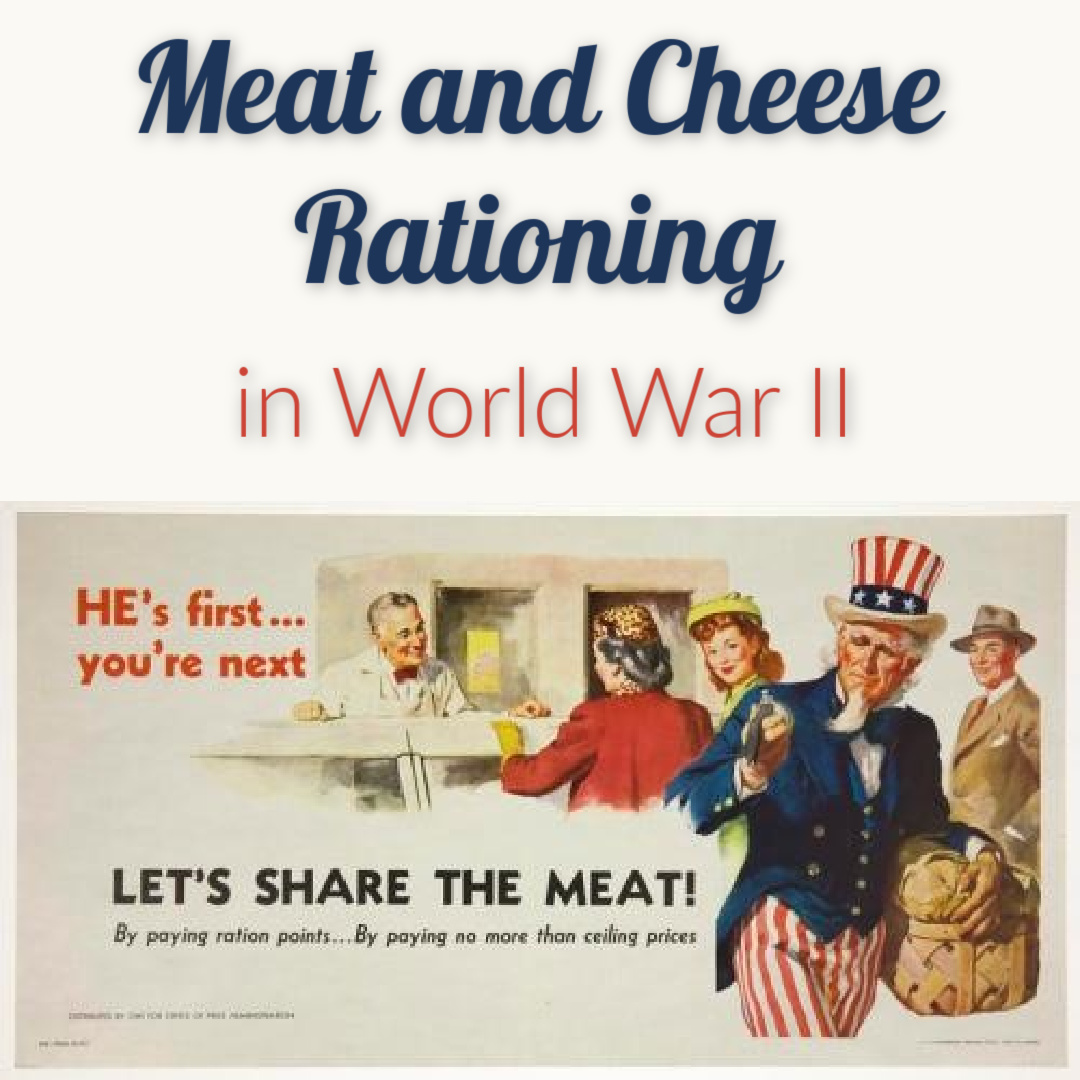Make It Do – Meat and Cheese Rationing in World War II
Rationing of meat and cheese was an important part of life on the US Home Front. A complex and constantly changing system kept grocery shoppers on their toes. Why meat and cheese? The United States produced meat and cheese for her civilians and military, and also for her Allies. During World War I, food shortages were a serious problem, with hoarding, escalating prices, and rushes on stores. When World War II started, the government reduced deliveries to stores and restaurants, instituted price controls, and urged people to voluntarily reduce consumption. Britain had already instituted a point-based rationing system and had found it effective, so the United States decided to implement a similar program in 1943. Rationing made sure everyone got a fair share. What was rationed? On March 29, 1943, meats and cheeses were added to rationing. Rationed meats included beef, pork, veal, lamb, and tinned meats and fish. Poultry, eggs, fresh milk—and Spam—were not rationed. Cheese rationing started with hard cheeses, since they were more easily shipped overseas. However, on June 2, 1943, rationing was expanded to cream and cottage cheeses, and to canned evaporated and condensed milk. Ration Books War Ration Books Two, Three, and Four contained blue stamps for processed foods and red stamps for meat, cheese, and fats. Each person received 64 red stamps each month, providing 28 ounces of meat and 4 ounces of cheese per week. The stamps were printed with a number for point value and a letter to specify the rationing period—such as C8. Rationing calendars in newspapers declared which stamps were current and for how long. To prevent fraud, the stamps had to be torn off in the presence of the … Continue reading Make It Do – Meat and Cheese Rationing in World War II
